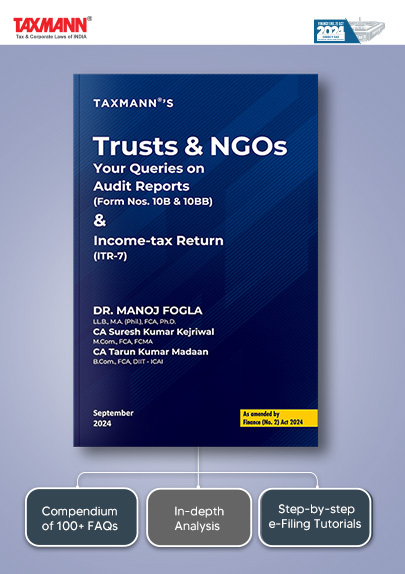[Opinion] Earn-out Arrangements in Mergers and Acquisitions – A Burnout?
- Blog|News|Income Tax|
- 2 Min Read
- By Taxmann
- |
- Last Updated on 21 July, 2023
Sandeep Jhunjhunwala – [2023] 152 taxmann.com 315 (Article)
Merger and Acquisition (M&A) arrangements are like a knight in shining armour for businesses especially in the start-up ecosystem with resilient business ideas which otherwise could have gone downhill in an environment of tightening financial conditions and macro-economic peaks and throughs. Although start-ups are breaking new grounds with their novel propositions, buyers are fraught with apprehension of being subterfuged by the oomph when valuations are mulled over.
Optimistic sellers desire the best value for their propositions, while on the other hand, wary buyers are looking at hedging their bets by keeping a weather eye on how the acquired business would transform to ascertain whether such investment would bring more bounce for the ounce. To converge buyer and seller sentiments and walk on parallel paths, parties often adopt the “deferred payment” route which is commonly referred as “earn-out mechanism” in the M&A sphere, as a tool to resolve the “valuation” bottleneck and ride the wind on the deal.
Earn-outs – A jargon in the M&A sphere
In layman’s terms, an earn-out is a deferred payment made by the buyer to the seller pending the fulfilment of specific and mutually agreed-upon contingent conditions. These conditions could be designed to either reduce risks of uncertainty related to businesses’ performance during or post the business acquisition, or to maximise the revenues from acquired business. These conditions are formulated with an objective of factoring the future performance of target company into the purchase consideration.
Although, earn-out arrangements can be structured differently, typical models include retention of seller/promoter and/or its representatives as employees in the business during post acquisition earn-out period. As a result, the seller actively participates in retaining customers, increasing productivity and revenues of the target even after acquisition, in order to earn the deferred consideration. In contrast, in other arrangements, the seller’s position is largely passive and limited to making inconsequential decisions. Moreover, depending on terms of the agreement between the parties, the pre-defined milestones for being eligible for deferred consideration could either be revenue based (i.e. linked to revenue, earnings before tax, earnings per share, etc) or non-revenue based (i.e. creation of IP, obtaining approval on patent, development of product line, continuation of employment of key personnel for a defined period, etc). Adding to the morass, the quantum of deferred consideration, at times, is not pre-determined and made a factor of EBIT/EBITDA achieved and hence, is unascertainable at the time of formalising the agreement.
Regardless of the favourable outcome, an earn-out arrangement poses a number of pressing issues, which significantly alters how earn-outs are perceived from an income tax and regulatory standpoint.
Click Here To Read The Full Article
Disclaimer: The content/information published on the website is only for general information of the user and shall not be construed as legal advice. While the Taxmann has exercised reasonable efforts to ensure the veracity of information/content published, Taxmann shall be under no liability in any manner whatsoever for incorrect information, if any.

Taxmann Publications has a dedicated in-house Research & Editorial Team. This team consists of a team of Chartered Accountants, Company Secretaries, and Lawyers. This team works under the guidance and supervision of editor-in-chief Mr Rakesh Bhargava.
The Research and Editorial Team is responsible for developing reliable and accurate content for the readers. The team follows the six-sigma approach to achieve the benchmark of zero error in its publications and research platforms. The team ensures that the following publication guidelines are thoroughly followed while developing the content:
- The statutory material is obtained only from the authorized and reliable sources
- All the latest developments in the judicial and legislative fields are covered
- Prepare the analytical write-ups on current, controversial, and important issues to help the readers to understand the concept and its implications
- Every content published by Taxmann is complete, accurate and lucid
- All evidence-based statements are supported with proper reference to Section, Circular No., Notification No. or citations
- The golden rules of grammar, style and consistency are thoroughly followed
- Font and size that’s easy to read and remain consistent across all imprint and digital publications are applied






 CA | CS | CMA
CA | CS | CMA


